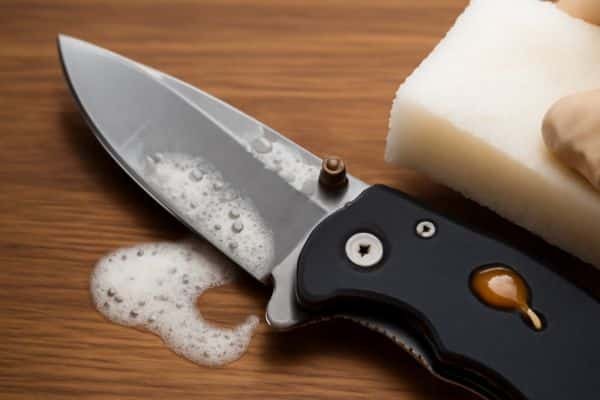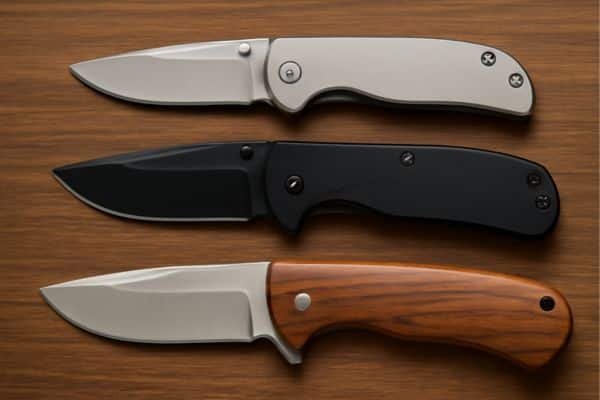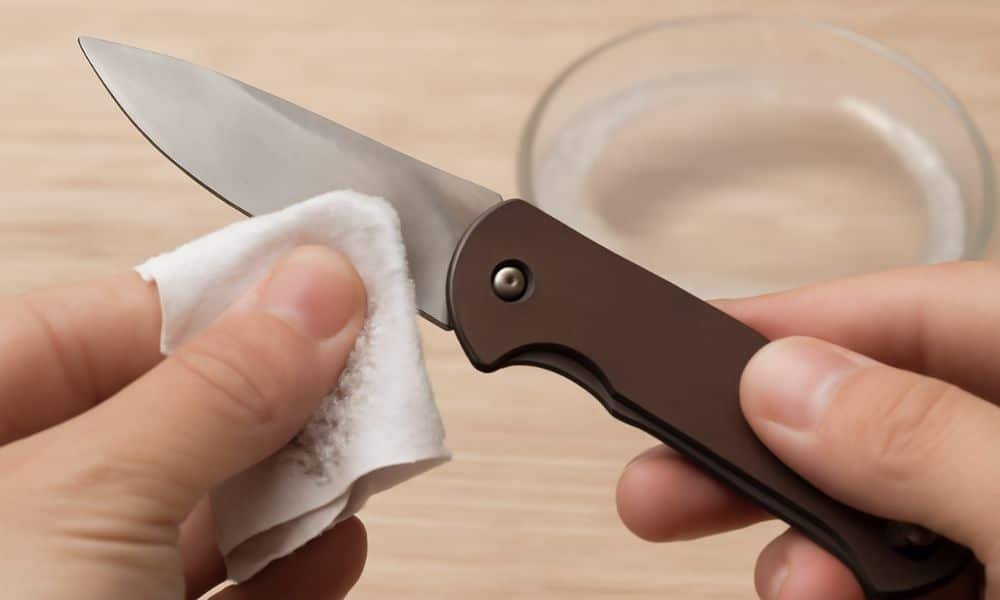I remember the first time I cleaned my folding knife. I was new to knives and didn’t know how important it was To keep them clean. After a few weeks, The blade got dull, And the mechanism felt stiff. That’s when I learned that cleaning your folding knife is key to keeping it in good shape. Now, I take care of my knife regularly. Cleaning it isn’t hard, And it makes a big difference. It stays sharp, smooth, and ready to use whenever I need it. In this guide, I’ll show you how to clean a folding knife step-by-step. Whether you’re A beginner or a seasoned user, These tips will help you take better care.
Why Cleaning Your Folding Knife Matters
Cleaning your folding knife is key To keeping it in good shape. At first, I didn’t realise how important it was. Over time, The blade became dull, And the mechanism felt stiff. That’s when I understood—regular cleaning is A must.
A clean knife works better and lasts longer. It keeps the blade sharp and the mechanism smooth. Dirt and grime can make unreliable. Cleaning it often prevents these issues and helps it perform well.
01. Open and Disassemble (if necessary)

Start by carefully opening your knife. Make sure your hands are dry And steady. If your needs are deeper cleaning, You may need to disassemble it. Some knives have screws that allow you to take them apart, Making it easier to clean the inner mechanism. Disassembling a folding knife helps you get into the harder-To-reach areas, But remember, Not all knives require this step—only do it if needed.
02. Cleaning the Blade
To clean the blade, Use a soft cloth with A bit of soap and water. Gently wipe the blade To remove any dirt or residue. Avoid using harsh scrubbing tools as they can damage the blade. A clean knife blade is essential For smooth cutting, So be gentle but thorough. For those looking for affordable quality, check out our best kitchen knife set under 100 for more options to keep your blades in top condition.
03. Cleaning the Handle
Different handles require different care. For wood handles, Use a damp cloth and mild soap. For plastic or metal handles, You can use a slightly stronger cleaner. Always check the manufacturer’s instructions For the right cleaning method.
04. Drying and Lubricating the Mechanism

Once the knife is clean, Make sure to dry it thoroughly. Moisture can lead to rust, So drying it completely is A must. After drying, Apply a small amount Of lubricant to the moving parts. This ensures the mechanism operates smoothly And prevents it from getting stiff or stuck.
05. Reassembling and Testing
If you’ve disassembled your knife, carefully put all the pieces back together. Tighten any screws, but don’t overdo it—just snug enough to hold everything in place. Finally, Test the knife. Open and close it a few times To ensure it folds properly And locks securely. This step confirms your folding is back to full working order.
Practical Tips for Getting It Just Right

Tip 1: Be Gentle but Thorough
Your knife doesn’t have to be rushed. Be gentle with each part. Rushing can damage delicate areas like the blade or the lock. Take your time to clean each section carefully. This will help keep it in good working order.
Tip 2: Avoid Harsh Chemicals
Harsh chemicals can harm your knife. They can strip away its finish or damage the parts. Stick to mild soap and water for cleaning. If needed, use a specific cleaner. This will keep your knife safe and looking great.
Tip 3: Regular Cleaning
Clean your knife often. Regular maintenance helps keep the blade sharp and the mechanism smooth. It prevents dirt, Grime, And rust buildup. The more you clean, The better it will work and last.
Types of Folding Knives and When to Use Each

Different Knife Types
Each with unique uses. Pocket knives are small, Portable, And perfect for everyday tasks like opening packages. Tactical knives are designed for strength And durability, And are often used in survival or emergency situations. Hunting knives are built To handle tougher tasks, Like skinning animals Or cutting through dense materials. Each type has its own cleaning needs based on how it’s used.
Cleaning for Specific Uses
The way you clean your knife Can change depending on how it’s used. For example, After outdoor activities or in wet conditions, You may need to clean more thoroughly. Dirt, mud, Or moisture can build up in the mechanisms And the blade. Tactical and hunting knives may require more frequent cleaning due To their exposure to rougher environments. Regular maintenance ensures they stay in top shape And ready for the next
Conclusion
Keeping your knife clean is simple but essential. Regular cleaning ensures the blade stays sharp, The mechanism runs smoothly, And the machine lasts longer. By following the steps we covered—disassembling, cleaning the blade and handle, Lubricating the mechanism, And testing your knife—you’ll help prevent damage and rust. Don’t forget, A clean works better and is safer to use. Make it a habit to clean regularly, and it will stay ready for any task.

